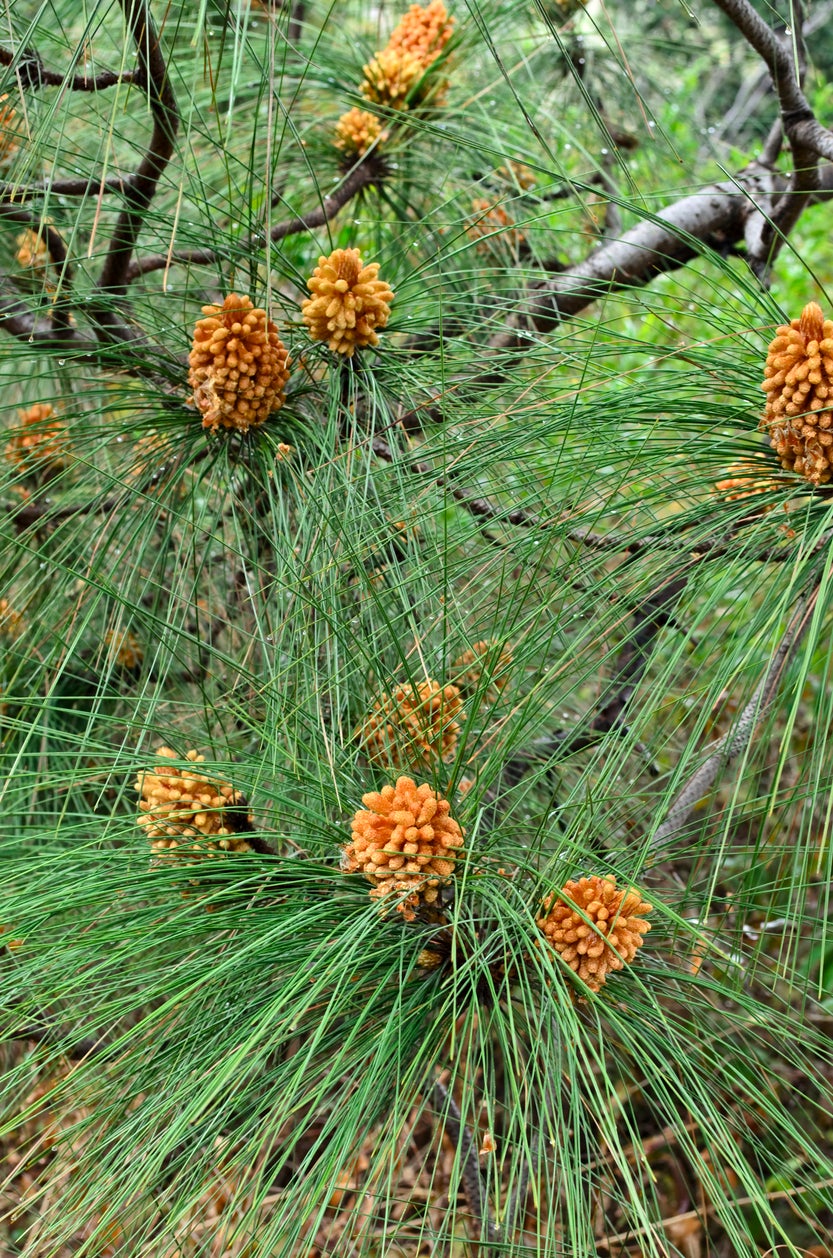Chir Pine Information – Learn About Chir Pine In Landscapes


There are many, many types of pine trees. Some make suitable additions to the landscape and others not so much. While the chir pine is one of those trees that can attain large heights, in the proper location, this tree can make a great specimen or hedgerow planting.
Chir Pine Information
Chir pine, also known as Indian Longleaf pine, is common to the most southern U.S. forests, although it is native to the Himalayas, where it is widely used for lumber. Needles of Pinus roxburghii are long and deciduous during dry seasons, but they usually remain on the tree for the better part of the year. Evergreen and coniferous, the trunk can grow to 6 feet (2 m.) around.
Using chir pine in landscapes is normal too, but you should allow plenty of room for the specimen, which can reach 150 feet (46 m.) at maturity. However, the tree more commonly reaches 60 to 80 feet (18-24 m.), still needing a good deal of space. It grows to a 30 to 40 foot (9-12 m.) spread too. Cones on mature trees grow in dense clusters.
Growing Chir Pine Trees
During the first few years of growing, chir pine trees offer an attractive shrub-like appearance. The trunk develops and the tree grows upward after eight to nine years. Plant these trees in groups or as a tall fence row. Remember, the large size they reach in maturity. Chir pine trees are sometimes used as a formal hedge, shade tree, or specimen plant in the landscape.
Chir pine tree care includes watering, fertilization, and possibly staking when the tree is young. Pine trees planted in fall may not have time to develop the large root system which holds them upright, so using a suitable stake to keep them from toppling in high winds during winter is important. Don’t secure too tightly though. You want to allow some movement to continue. This movement signals the roots to develop. Stakes and ties can usually be removed within the first year.
Fertilization is not always necessary for young pine trees. Amend the soil before planting if you have that option. These trees grow best in acidic soils amended with finished compost or other organic content. Take a soil test if you have questions about the acidity.
If you wish to feed chir pines that are already growing in your landscape, use a complete fertilizer or a compost tea if you wish it to be organic. You may also surround trees, both young and old, with an organic mulch (like pine needles) that slowly provides nutrients as it breaks down.
Gardening tips, videos, info and more delivered right to your inbox!
Sign up for the Gardening Know How newsletter today and receive a free copy of our e-book "How to Grow Delicious Tomatoes".

Becca Badgett was a regular contributor to Gardening Know How for ten years. Co-author of the book How to Grow an EMERGENCY Garden, Becca specializes in succulent and cactus gardening.
-
 Moody Blooms For Spring: 8 Types Of Black Flowers To Add Drama To Spring Displays
Moody Blooms For Spring: 8 Types Of Black Flowers To Add Drama To Spring DisplaysFrom midnight burgundies to inky violets, several types of black flowers can enrich and embolden a spring display. Try these brooding bloomers for a moody garden
By Tonya Barnett
-
 My Homemade Orchid Fertilizer Always Brings More Blooms – Here's The Easy Recipe That Transforms Plants
My Homemade Orchid Fertilizer Always Brings More Blooms – Here's The Easy Recipe That Transforms PlantsScientist-turned-gardener Mary Ellen Ellis shares her tried-and-tested DIY orchid fertilizer recipe, plus more ingredients to try for healthy, happy plants.
By Mary Ellen Ellis